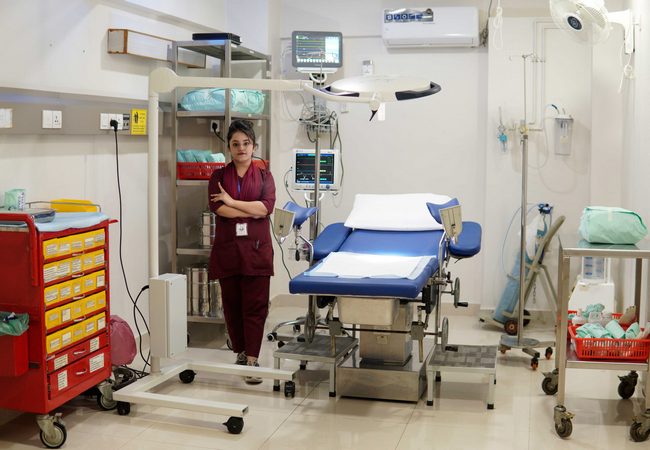Labor Process Factors and Maternity or Labour Room Equipment List
Definition of Full Term Pregnancy:
When the duration of pregnancy continues up to 37 completed weeks from first day of last menstrual period the pregnancy is termed as full term pregnancy.
Definition of Labor:
Series of events take place in the genital organs of a pregnant women in an effort to expel the, viable product of conception from the womb to the exterior through vagina is called labour. The physio logical process by which the fetus (viable) is expelled from the uterus into the vagina and then to the outside of the body.

Initiation of Labor:
Labor is a phenomenon that depends on complicated interaction between the fetus and mother. Factors believed to be influential in the onset of labor are genetic control, myometrial stretch, increased estrogen levels, progesterone withdrawal, Oxytocin sensitivy, prostaglandins and fetal and membrane factors.
Physiological Changes During Labor:
- Reproductive change: uterine, cervix, changes of amniotic fluid.
- Nervous system change,
- Cardiovascular system change,
- Fluid and electrolyte system change,
- Respiratory system change,
- Urinary system change,
- GI system change,
- Immune system change.
Factors Related To Labor Process:
There are five factors related to labor:
1. Passenger: The passage of the fetus through the birth canal is influenced by the size of the fetal head and shoulder, the dimensions of the pelvic girdle, and the fetal presentation and position.
- Fetal head,
- Shoulders and pelvic girdle,
- Fetal lie,
- Presentation,
- Attitude,
- Position.
2. The passageway/Passage:
- Pelvis,
- Soft tissues.
3. Power:
- Uterine contractions,
- Voluntary bearing-down efforts,
- Implications of nursing care.
4. Psycho logical factors:
- 1st stage – euphoria leads to seriousness,
- 2nd stage: amnesia,
- 3rd stage: elation or fatigue.
5. Position of the mother: Position is the relationship of the fetal reference point (e.g., occiput, brow, chin or mentum, or sacrum) to one of the four quadrants of the mother’s pelvis; that is the most prominent and dependent portion of the presenting part is related to one of the four quadrants of the moth’s pelvis.
Factors Affecting Responses to Pain in Labor:
Factors influencing how to feel about labour pain:
- Society’s attitudes,
- Cultural and religious beliefs,
- Birth stories,
- Fears and concerns,
- Expectations,
- Progress in labour,
- Exhaustion,
- Complications arising,
- Pain relief not meeting expectations,
- The caregiver’s influence.
Normal Delivery or Maternity or Labour Room Equipment List:
A. For mother –
Sterile delivery pack containing –
1. Articles for cutting and suturing an episiotomy:
- Episiotomy scissors,
- Artery clamps -3,
- Tissue forceps – 1,
- Needle ho lder-1,
- Syringe and needle for infiltration – 10 ml.
2. Scissors for cutting the cord,
3. Bowl for cleaning solution,
4. Basin to receive placenta,
5. Cotton balls,
6. Gauze pieces,
7. Towel to cover the hand supporting the perineum,
8. Sterile gown,
9. Leggings for mother,
10. Apron, gloves and mask for staff.
B. For new born –
- Baby blanket or flannel cloths – 2: One to receive and dry the baby of excess secretion and another to wrap the baby.
- Neonatal resuscitation equipment,
- Oxygen cylinder with tubing,
- Suction apparatus and mucous extraction,
- Cord clamps,
- Bulb syringe for nasal oropharyngeal suctioning of the baby.
C. Other articles –
- Antiseptic lotion – savlon or Dettol,
- Suture material,
- Perineal pads for mother,
- Sterile gloves,
- Methergin 6. Ligno caine 2%.

Maria Khatun Mona is a Founder and Editor of Nursing Exercise Blog. She is a Nursing and Midwifery Expert. Currently she is working as a Registered Nurse at Evercare Hospital, Dhaka, Bangladesh. She has great passion in writing different articles on Nursing and Midwifery. Mail her at “maria.mona023@gmail.com”
